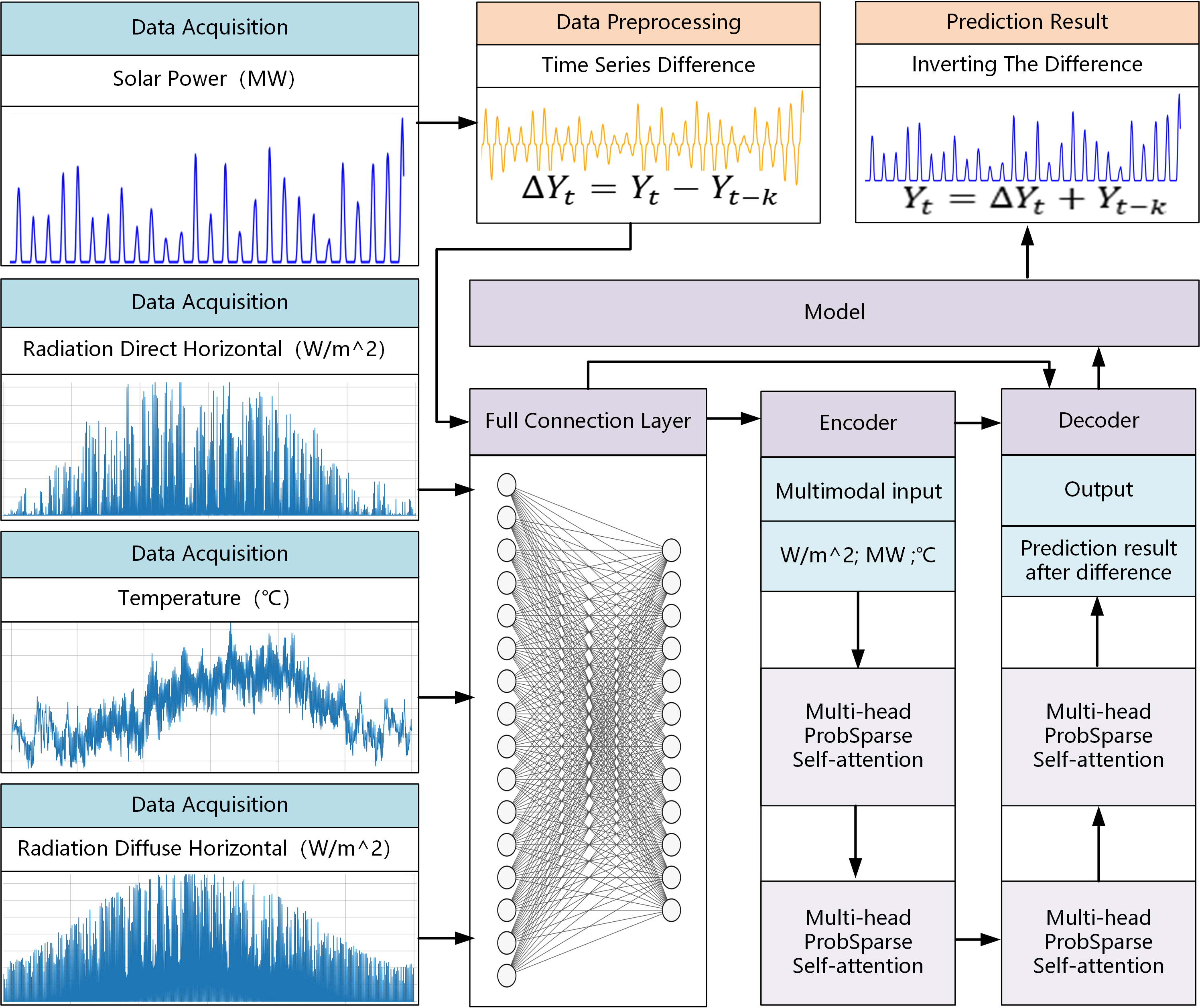 Open Access
Open Access
ARTICLE
Weather-Driven Solar Power Forecasting Using D-Informer: Enhancing Predictions with Climate Variables
1 School of Electrical Engineering, Northeast Electric Power University, Jilin, 132013, China
2 Shenzhen Institute of Advanced Technology, Chinese Academy of Sciences, Shenzhen, 518055, China
* Corresponding Author: Zhao An. Email:
Energy Engineering 2024, 121(5), 1245-1261. https://doi.org/10.32604/ee.2024.046644
Received 09 October 2023; Accepted 29 December 2023; Issue published 30 April 2024
Abstract
Precise forecasting of solar power is crucial for the development of sustainable energy systems. Contemporary forecasting approaches often fail to adequately consider the crucial role of weather factors in photovoltaic (PV) power generation and encounter issues such as gradient explosion or disappearance when dealing with extensive time-series data. To overcome these challenges, this research presents a cutting-edge, multi-stage forecasting method called D-Informer. This method skillfully merges the differential transformation algorithm with the Informer model, leveraging a detailed array of meteorological variables and historical PV power generation records. The D-Informer model exhibits remarkable superiority over competing models across multiple performance metrics, achieving on average a 67.64% reduction in mean squared error (MSE), a 49.58% decrease in mean absolute error (MAE), and a 43.43% reduction in root mean square error (RMSE). Moreover, it attained an R² value as high as 0.9917 during the winter season, highlighting its precision and dependability. This significant advancement can be primarily attributed to the incorporation of a multi-head self-attention mechanism, which greatly enhances the model’s ability to identify complex interactions among diverse input variables, and the inclusion of weather variables, enriching the model’s input data and strengthening its predictive accuracy in time series analysis. Additionally, the experimental results confirm the effectiveness of the proposed approach.Graphic Abstract

Keywords
Cite This Article
 Copyright © 2024 The Author(s). Published by Tech Science Press.
Copyright © 2024 The Author(s). Published by Tech Science Press.This work is licensed under a Creative Commons Attribution 4.0 International License , which permits unrestricted use, distribution, and reproduction in any medium, provided the original work is properly cited.


 Submit a Paper
Submit a Paper Propose a Special lssue
Propose a Special lssue View Full Text
View Full Text Download PDF
Download PDF Downloads
Downloads
 Citation Tools
Citation Tools